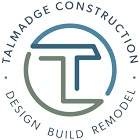Do you know when the furnace was installed in your home? You might be able to save money as well as make your home healthier by upgrading your forced air system. Recent technology has dramatically improved the performance of these systems to provide you with the healthiest air at the lowest energy cost possible. Consider these facts: the best gas-burning unit installed before 1988 had an annual fuel utilization efficiency (AFUE) 65%. By 1992, the AFUE of new units increased to 78%. But today’s high-efficiency forced air heating systems typically allow you to control humidity, filter air, introduce fresh air from outside, and quickly change the temperature of an area, all at between 90 to 98.5% AFUE. The dollars add up; the Department of Energy estimates that by upgrading from a 75% AFUE to a 95% AFUE unit, you will save $21.10 for every $100.00 spent annually on heating costs.
If you’re not ready to upgrade your forced-air heating system, though, there are still ways to increase the efficiency of your existing unit. Begin with a professional inspection and tune-up of your existing system. Over a five-year period, that tune-up can result in an average savings of $365 dollars in your energy costs as well as keeping 3,000 pounds of carbon dioxide out of the atmosphere. During the tune-up, your HVAC technician will conduct combustion efficiency testing, including flue temperature and draft; test for carbon monoxide; clean the burner, combustion chamber, and heat exchanger surfaces; adjust air flow rate and fuel flow, and calibrate the internal thermostat. In the majority of cases, your home will be healthier and your energy costs will go down as a result; it generally takes less than two years for those energy savings to pay for the cost of the tune-up.Then keep on top of your HVAC unit’s filtration. Darrell Hardy, President of Hardy Quality Air, says, “at the very least, clean or replace your air filters, as restricted air flow is an efficiency killer. It’s hard on the furnace not to mention the negative impact on indoor air quality.” It’s recommended that filters should be replaced every month.
Maintaining your ducts is also a key element in maximizing the efficiency of your furnace, no matter how old it is. Begin by checking to make sure all the ducts are properly connected. Often, ducts have been crushed or disconnected during other home maintenance and repair, and animals like skunks and rats love to get in and nest around in the warm air. Experts agree that in the United States at least 20% of heated air never reaches your home due to damaged ducts; nationwide, this reflects a loss of energy equal to the annual energy consumption of 13 million cars.
Other ways to maximize the efficiency of your system:
- Use duct mastic, or a mastic type tape that is U.L listed for duct sealing, not standard duct tape, to seal ducts. Duct tape will start leaking in as little as three years, while duct mastic is designed to maintain a seal for decades. Hardy also points out that duct systems that are wrapped in bare fiberglass show air leaks very well. “Just look for darkened areas which are caused by air passing through. Expose those locations and apply approved sealer.”
- Make sure air can flow under doors if they are closed; there should be ¾” to 1″ of space above your carpet or floor material.
- If you are remodeling, ask you contractor to install air filtration at all return air inlets to protect the ductwork and furnace.
- Seal the ducts in the construction area during your remodel and clean them when the project is finished.
A final word of advice from Hardy, “You should take care of your home heating appliances, whether they are furnaces, boilers, gas or regular fireplaces, as you would your car to optimize efficiencies and maintain reliability. Neglect is the biggest single issue we see out there, both in residential and commercial properties.”

